Social commerce has rapidly emerged in recent years, and we believe this trend will play an even larger role in the coming years. The “death of the Cookie” has led to a 3x higher CAC, making social commerce applications even more appealing. It is even expected that the market share of social commerce will rise with a CAGR of 30.2% to €6.2 trillion by 2030.
These are impressive figures. For us as a marketing agency, this is a mega opportunity. And when social commerce fully rolls out, it will bring many adjustments within the current ad flows. So it's very important to keep a close eye on developments 😉
Quote – Social Commerce: The integration of social experiences and e-commerce transactions into one purchase path, enabled by one platform.

The Rise of Social Commerce
During the coronavirus pandemic, we saw that the importance of “connection” was emphasized once again. We were forced to adapt and engage in even more online connections with each other.
For many people, social platforms have become the starting point for everything they do: news, entertainment, and communication. We now see that commerce can also be added to that list with the rise of social commerce.
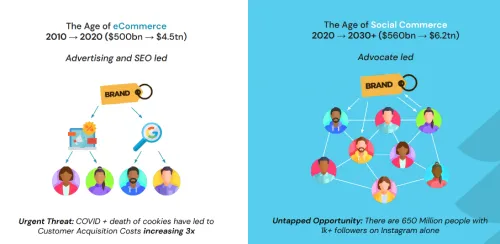
What also stands out is that consumers increasingly prefer to buy products based on recommendations and inspiration from people they trust. These can be family, friends, and communities, but also authentic influencers they follow on social media. They want to feel inspired, informed, and confident in what they purchase.
We see that social commerce offers the solution here! Think of a better shopping experience that encourages discovery, enables personalization, and leverages the expertise and authenticity of people to build trust.
Why Social Commerce is So Powerful
What actually happens is that social commerce shifts the “power” from retailers and brands to the consumer. Additionally, the rise of social media itself gives this a huge boost.
In essence, social commerce is nothing less than a people-driven social retail revolution that is also incredibly effective. Why? Because in social commerce, social experiences and e-commerce transactions are seamlessly combined, with just one purchase path within one platform.
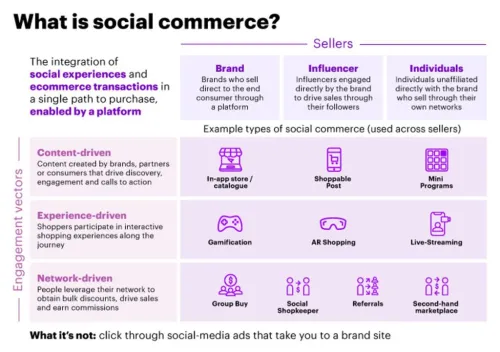
Types of Social Commerce
Generally, there are three ways in which social commerce works, namely through: brands (content-driven), influencers (experience-driven), and consumers themselves (network-driven).
- Content-driven: In this form of social commerce, unique content created by brands, influencers, or consumers that encourages authentic discovery, engagement, and action is central. Platform users discover new goods and experiences through Shoppable Posts and in-app stores on Pinterest, YouTube, TikTok, Facebook, and Instagram (to name a few).


- Experience-driven: This form of social commerce enables shopping within a certain experience (usually livestreams, but increasingly AR/VR and gamification).



- Network-driven: In this form of social commerce, people use their existing social networks to buy or sell products. For example, a larger group of consumers can get bulk discounts, or a network can be used to earn commissions.

Quote – Social Commerce offers new opportunities for consumers, creators, influencers, and sellers
What we see is that these three ways of social commerce have one thing in common: they are all driven by creativity, ingenuity, and the power of people. Anyone can make money with their network. And many are already doing so in the complex and rapidly growing ecosystem of social commerce.
The Social Commerce Ecosystem
An important part of the social commerce ecosystem is the social media platform itself. Nowadays, the platform actually functions as a kind of online marketplace where consumers and sellers come together. We expect this to only increase in the future.
Brands use the social commerce ecosystem to sell their products (both large multinationals and smaller companies). Additionally, influencers also play an important role. Finally, consumers are the end users of the products and purchase them via social media platforms.
The social commerce ecosystem is thus a complex whole of different elements working together to sell products through social media channels. It offers brands the chance to promote their products efficiently and consumers the opportunity to shop online easily. Ideal, right?
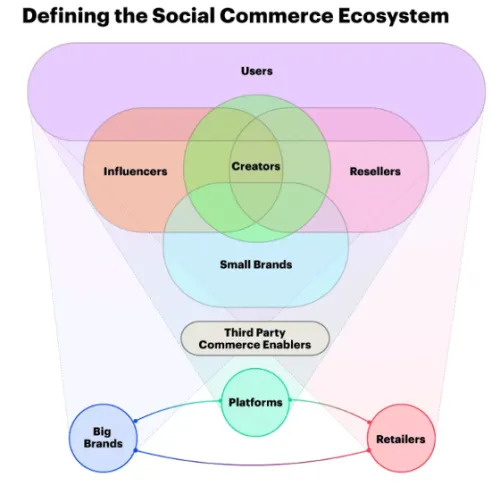
Benefits of Social Commerce
Social commerce offers several advantages over traditional e-commerce. We have listed the two main advantages for you below:
- A webshop is no longer necessary
One of the biggest advantages of social commerce is that you don't need to have your own webshop. Instead, you can use the in-app store features on social media platforms, such as Instagram’s shoppable posts or Facebook’s shop integration. This means you don't have to invest in setting up and maintaining your own webshop.

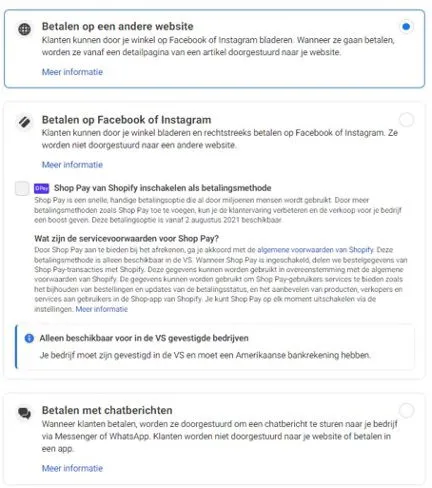
- Products can be easily discovered and purchased through Discovery Commerce
Social media also offers the opportunity to discover products through discovery commerce. This means that consumers can discover products through social media posts or ads, without having to specifically search for a webshop.
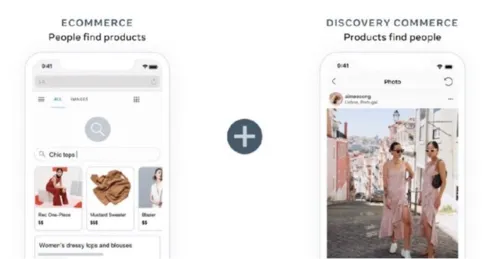
Implementing Social Commerce
Even though not all functionalities are available yet, it is already possible to make preparations for implementing social commerce and to use the functions and data that are already available.
Fact: In recent years, there has been an average increase in the number of minutes users spend on social media platforms.
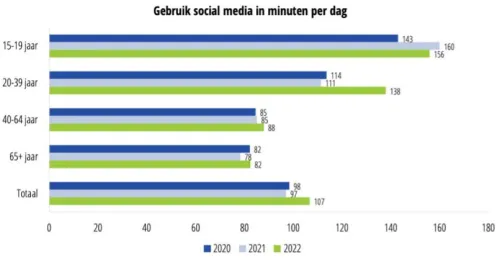
Through Which Platforms Can You Implement Social Commerce?
We expect that social commerce will eventually spread across all social media platforms we know today. Perhaps new platforms will even emerge where social commerce is central. At the moment, it is (limitedly) possible on a number of different social media platforms, including:
- Facebook & Instagram: Both channels offer the possibility to sell products through ads but also shops on the platform.
- TikTok: TikTok offers the possibility to sell products through ads but also shops on the platform (currently only in the US).
- Pinterest: Pinterest offers the possibility to sell products through ads but not yet shops on the platform.
We therefore expect that in the future, probably more social media platforms will offer the possibility to perform in-platform transactions. For example, there are already rumors that Twitter and Snapchat are working on developing sales features for their platforms.

For Which Target Audience is Social Commerce Interesting?
You know them… Gen Z, Gen X, Millennials, and Baby Boomers are terms used to identify different generations. Each of these target audiences has its own characteristics. We have highlighted them for you below:
- Gen Z: The generation currently between 4 and 24 years old. Gen Z is the first generation to grow up with digital technology, and they are therefore often very familiar with online platforms and social media. An ideal target audience for social commerce.
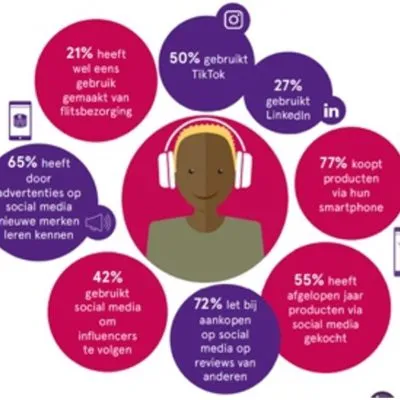
- Millennials: The generation currently between 24 and 39 years old. Millennials are the first generation to grow up with mobile phones and social media, and they are therefore often very familiar with social media and thus also social commerce!

- Gen X: The generation currently between 40 and 55 years old. Gen X is the generation that grew up during the rise of personal computers and the internet, and they are therefore familiar with digital technology but not as adept with smartphones as Gen Z and millennials. However, the target audience is becoming more familiar with new functionalities on social media platforms and is therefore also a suitable target audience for social commerce.
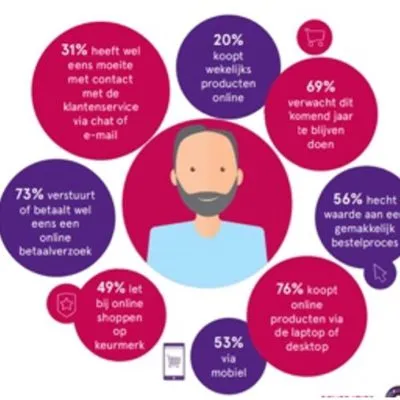
- Baby Boomers: The generation currently between 56 and 76 years old. Baby Boomers are the generation that grew up during the rise of television and other forms of mass media, and they are therefore often familiar with traditional marketing channels. New functionalities within social media channels are often more difficult to understand for this target audience, making it a slightly less suitable target audience for social commerce.
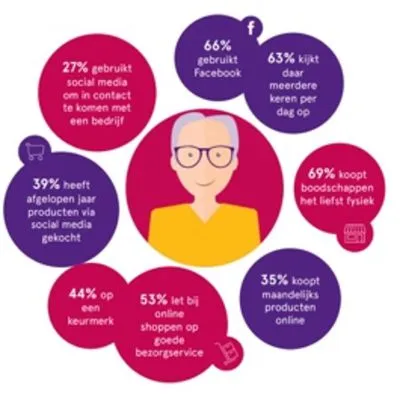
Social commerce can therefore be interesting for all generations, depending on the specific products or services offered. However, it is true that some generations use social media and online platforms more frequently than others, which means they are more susceptible to social commerce strategies.
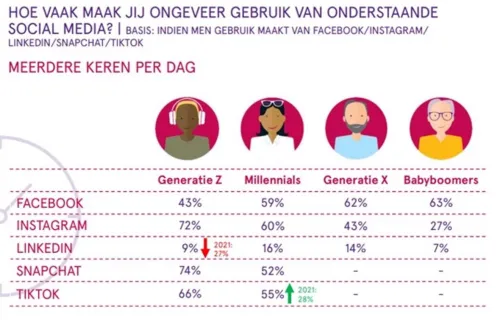
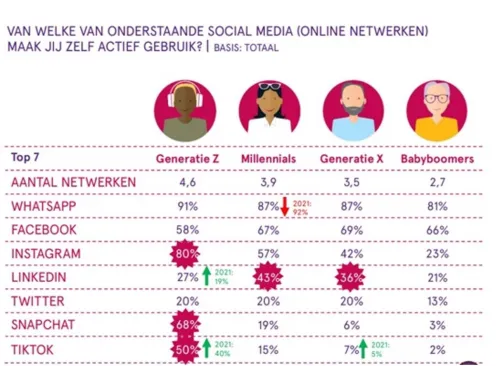
Trust is Very Important
Trust is important for social commerce because it is a key factor in customers' decision to make a purchase. If customers trust a brand or a product, they are more likely to make a purchase.
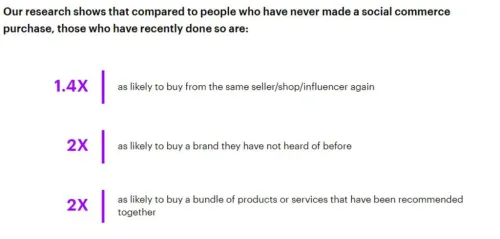
There are several ways trust can be built in social commerce:
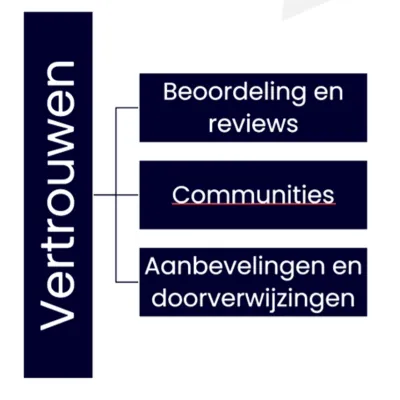
- Reviews and ratings within the platform: Reviews and ratings can help build trust with people considering buying a product or service. In social commerce, the goal is for the consumer to stay within the platform and not have to leave the platform to view reviews via, for example, Google.

- Info labels: Info labels on posts can also help build trust. These are small labels highlighting a brand's USPs. By communicating this clearly, trust can be built with people who see the post, and it can prevent people from thinking they are being misled.

- Recommendations and referrals: Recommendations and referrals from friends or family can also help build trust. If people see that someone recommends or refers them to a product or service, they no longer need to seek confirmation through other channels and remain within the platform.

Important Adjustments Within the Pixel
There are several parameters that are interesting to add as events in the Facebook pixel if you use social commerce:
- Product viewed: People who viewed a product details page in your Facebook or Instagram shop.
- Clicked through to website: People who viewed a product details page in your Facebook or Instagram shop and clicked through to the website.
- Product saved: People who saved a product from your Facebook or Instagram shop.
- Shop page viewed: People who viewed your Facebook or Instagram shop.
- Shops collection viewed: People who viewed a collection in your Facebook or Instagram shop.
- Product(s) added to cart: People who added a product from your Facebook or Instagram shop to their cart.
- Checkout started: People who started the checkout process in your Facebook or Instagram shop.
- Product purchased: People who purchased a product in your Facebook or Instagram shop.
It is advisable to add these events to the Facebook pixel to measure how successful your social commerce strategy is and to create targeted ads to generate more purchases.
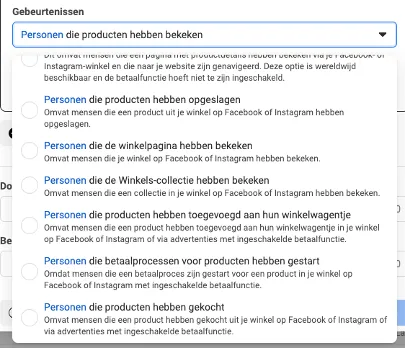
Your Catalog Becomes the Starting Point
The Facebook catalog is extra important in social commerce because it is a way to showcase all your products to your target audience on Facebook and Instagram. This can help you get more visitors to your website or generate direct sales through the sales features of these platforms.
There are several tips you can follow to use the Facebook catalog for social commerce:
- Add as many products as possible to your catalog: The more products you add to your catalog, the greater the chance that people will find something interesting and go to your website or make a purchase through Facebook's sales features.
- Use good product images: It is important to use good product images to ensure that people become interested in your products. Make sure the images are of good quality and provide a good representation of the product.
- Add as much product information as possible: It is important to add as much information as possible to your products, such as a description, dimensions, weight, and any offers. This can help persuade people to make a purchase.
By following these tips, you can use the Facebook catalog to strengthen your social commerce strategy and generate more purchases through social commerce.
Linking Webshop with Channable
Now you don't need a webshop for social commerce, but if you do have a webshop, that's of course fine. You can easily link your webshop via Channable and ensure that your feed is optimally delivered (this is important so that the platform can link your products to your website as well as possible).
Channable is a tool you can use to manage your product feeds and integrate with various channels, including social media. You can use Channable for social commerce by using it to synchronize your product feeds with social media platforms, such as Facebook and Instagram. This makes it easy to showcase your products to a wide audience and generate direct sales through the sales features of these platforms.
Social Commerce Funnel
The regular funnel we use consists of the SEE/THINK/DO/CARE model. For social commerce, it is also good to work through this model, only small adjustments are made to the target audiences used (because the data remains within the platform).
Current funnel we use:
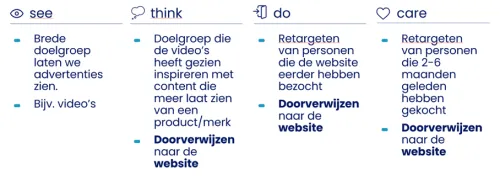
What we are actually going to see is a shift of the target audiences to the platform itself. In the traditional funnel, we use retargeting campaigns in all performance phases of website visitors. With the rise of social commerce, this target audience increasingly stays within the platform, making Meta Sources, for example, much more important.

The “new” funnel will also look very different:
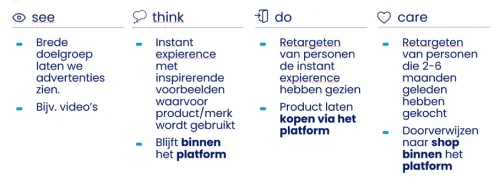
Where Can You Start Now?
If you want to start with social commerce, there are several steps you can take to ensure you start in the right way:
- Set up shop: The first thing you need to do is set up a professional shop on a social media platform, such as Facebook or Instagram. Make sure your shop looks professional by using good product images and a clear layout.

- Tag products: By already tagging your products on, for example, Instagram, you can easily share them with your followers and ensure they are better found. This can help get more visitors to your shop and generate more purchases through social commerce.
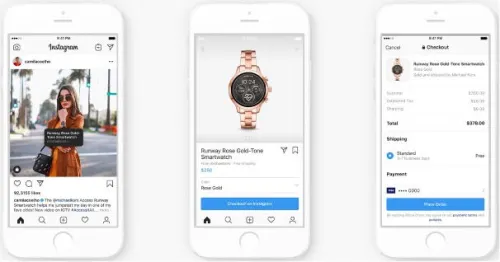
- Create target audiences with data within the platform: By creating target audiences based on data within the social media platform, you can create targeted ads for people who are interested in what you have to offer. This can help get more visitors to your shop and generate more purchases.
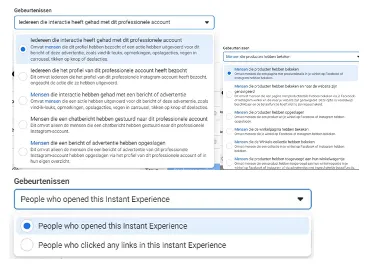
- Build a community: By building a community around your brand or products, you can engage people and help them stay connected with your brand. This can help create loyal customers and generate more purchases.

- Start collaborations: The collab feature on Instagram is a handy tool for brands to collaborate with other brands or influencers. This feature makes it easy to collaborate on a post or a series of posts on Instagram and to benefit from each other's followers and reach.

- Livestreaming: By livestreaming on social media platforms, you can engage people and show them what you have to offer. This can help get more visitors to your shop and generate more purchases.
- Demonstrate products
- Showroom
- Latest collection
- Q&A

By following these steps, you can effectively start with social commerce and ensure you get the most out of your social media presence.
Conclusion
In short, we are still in the early stages of social commerce, but platforms are developing very quickly. It is very important to adjust your strategy and also ensure trust. You can already start setting up shops on social media and tagging products in posts.
Additionally, you can already start building target audiences within the platforms, building communities, collecting reviews, and entering into collaborations. Plenty of opportunities to make a flying start when in-app purchases roll out!




